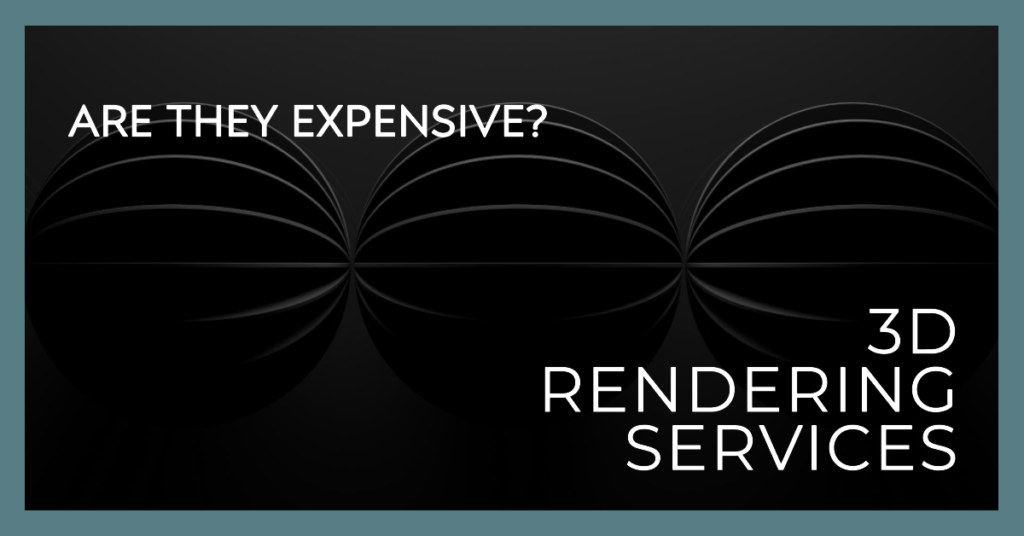
Table of Contents
1. Introduction: Debunking Myths Surrounding 3D Rendering Costs
The perception of 3D rendering services as expensive often stems from misconceptions and incomplete understanding of the value they bring to architectural, design, and marketing projects. In this blog post, we delve into the factors influencing 3D rendering costs, the value proposition they offer, and how businesses can make informed decisions regarding their investment in visualization services.
2. Defining 3D Rendering Services: Beyond Visuals
Before delving into costs, it’s essential to understand the scope of 3D rendering services. These services go beyond creating visually stunning images; they encompass the creation of immersive virtual environments, animations, walkthroughs, and interactive experiences that bring designs to life. The versatility of 3D rendering extends across industries, including architecture, interior design, product development, marketing, and entertainment, offering a wide range of applications and benefits.
3. Factors Influencing Costs: Understanding the Variables
Several factors contribute to the overall cost of 3D rendering services, including project complexity, level of detail, required deliverables, timeline, and the experience of the rendering team. Complex architectural designs with intricate details, realistic textures, and extensive environmental elements may require more time and expertise, impacting costs accordingly. Additionally, the need for high-resolution images, animations, or virtual reality experiences adds to the scope of work and thus influences pricing.
4. Quality Matters: Investing in Realism and Precision
One of the primary determinants of rendering costs is the desired quality level. High-quality renderings with realistic lighting, materials, and textures require advanced software, skilled artists, and meticulous attention to detail. While higher quality often correlates with higher costs, it also enhances the overall visual impact, realism, and effectiveness of the rendered assets in conveying design intent, marketing products, or presenting concepts to clients and stakeholders.
5. Customization and Iterations: Tailoring Solutions to Needs
Another aspect influencing costs is the level of customization and the number of iterations required. Tailored solutions that align with specific branding guidelines, design preferences, or marketing objectives may involve more time and effort in conceptualization, revisions, and fine-tuning. Collaborative feedback loops between clients and rendering teams also contribute to project timelines and costs, ensuring that the final deliverables meet or exceed expectations.
6. Timeframes and Deadlines: Balancing Speed and Quality
Meeting tight deadlines or expedited project timelines often incurs additional costs in rendering services. Rush projects require dedicated resources, extended working hours, and expedited processes to deliver high-quality results within the specified timeframe. Balancing speed and quality is crucial in such scenarios, and clients can opt for varying levels of urgency based on project priorities and budget considerations.
7. Scalability and Volume: Cost-Efficiency in Bulk Projects
For businesses or agencies requiring a consistent flow of rendering projects or bulk orders, scalability plays a role in cost-efficiency. Rendering service providers may offer discounted rates or package deals for long-term collaborations or large-volume projects. This approach not only streamlines workflows but also ensures continuity, consistency, and cost predictability for ongoing rendering needs.
8. Technology Advances: Harnessing Efficiency and Innovation
Advancements in rendering technology, including GPU acceleration, cloud rendering, and AI-driven workflows, have revolutionized the efficiency and capabilities of rendering services. While initial investments in cutting-edge technologies may contribute to overall project costs, they often result in faster turnaround times, improved quality, and enhanced creativity, offering long-term value and competitive advantages in the market.
9. ROI Perspective: Evaluating Value Beyond Costs
When assessing the affordability of 3D rendering services, it’s crucial to shift focus from upfront costs to long-term return on investment (ROI). High-quality renderings and immersive experiences not only enhance marketing campaigns, client presentations, and design approvals but also contribute to increased sales, brand recognition, and client satisfaction. Viewing rendering services as strategic investments rather than mere expenses helps businesses unlock their full potential and competitive edge.
10. Conclusion: Balancing Quality, Costs, and Value


In conclusion, while 3D rendering services entail costs, they offer immense value, impact, and opportunities across industries. By understanding the factors influencing costs, prioritizing quality, leveraging technology advancements, and evaluating ROI perspectives, businesses can navigate rendering expenses effectively while unlocking the transformative potential of visual storytelling, design communication, and marketing impact. Making informed decisions, collaborating with experienced rendering teams, and aligning rendering strategies with business objectives ensures a harmonious balance between quality, costs, and value in leveraging 3D rendering services.



